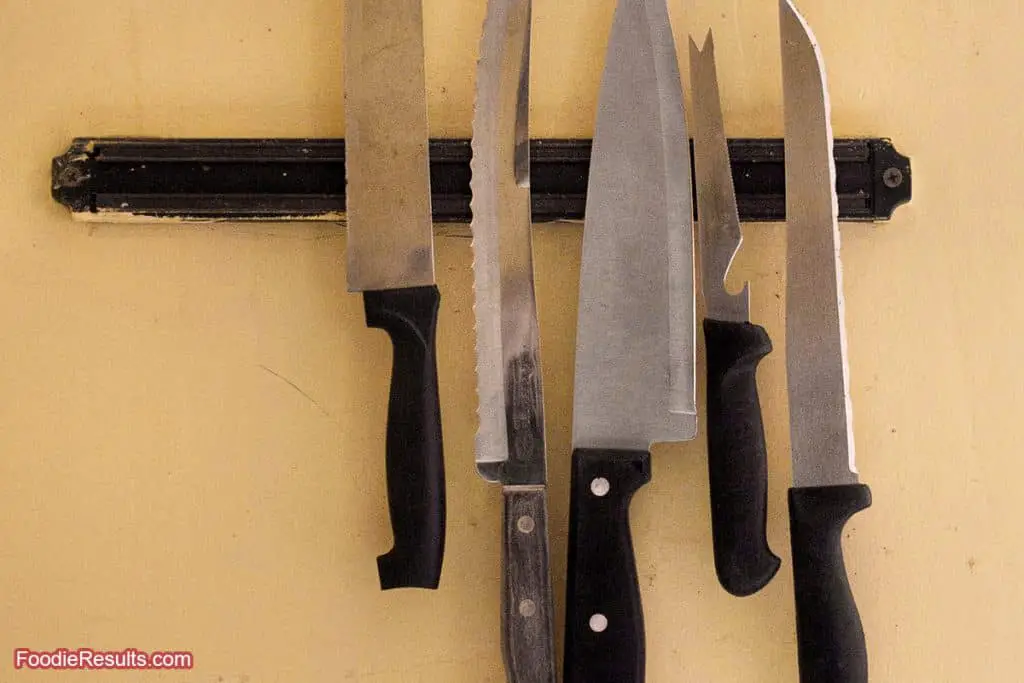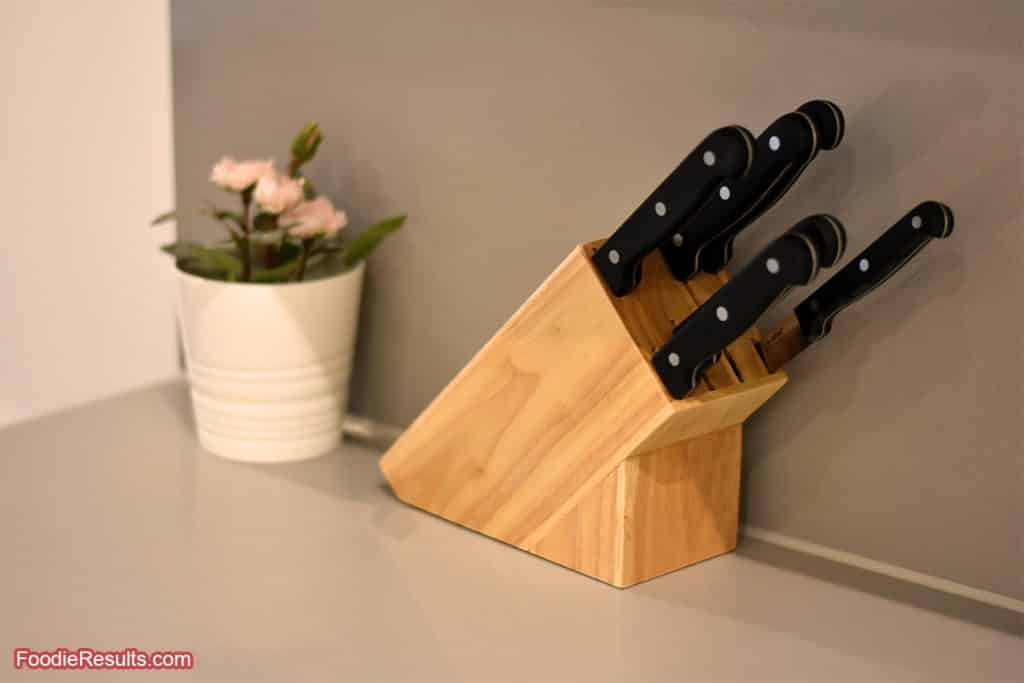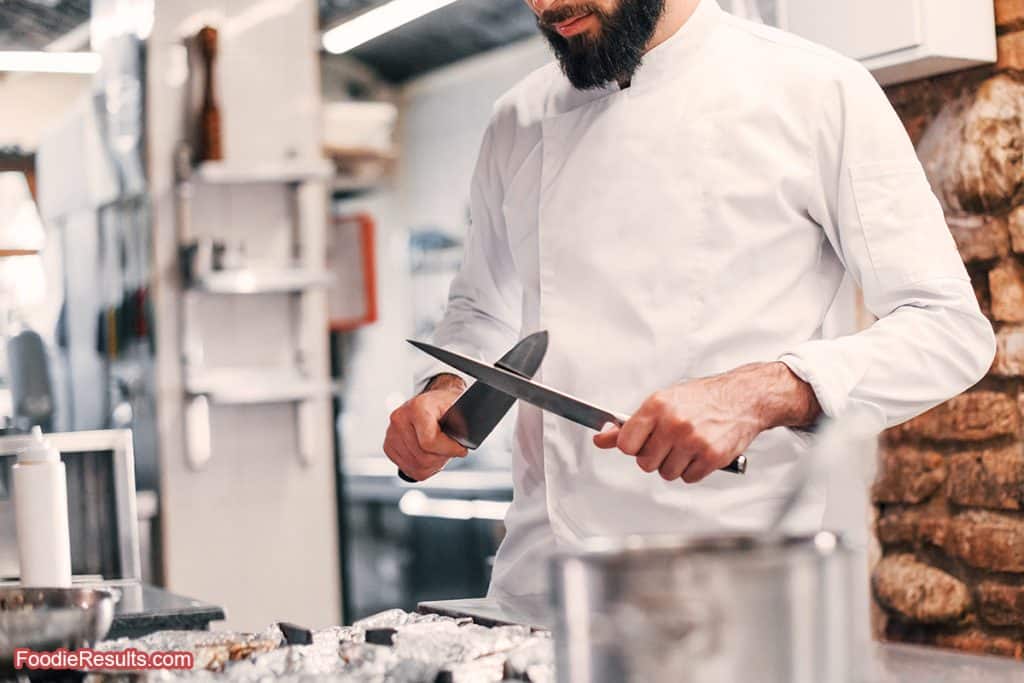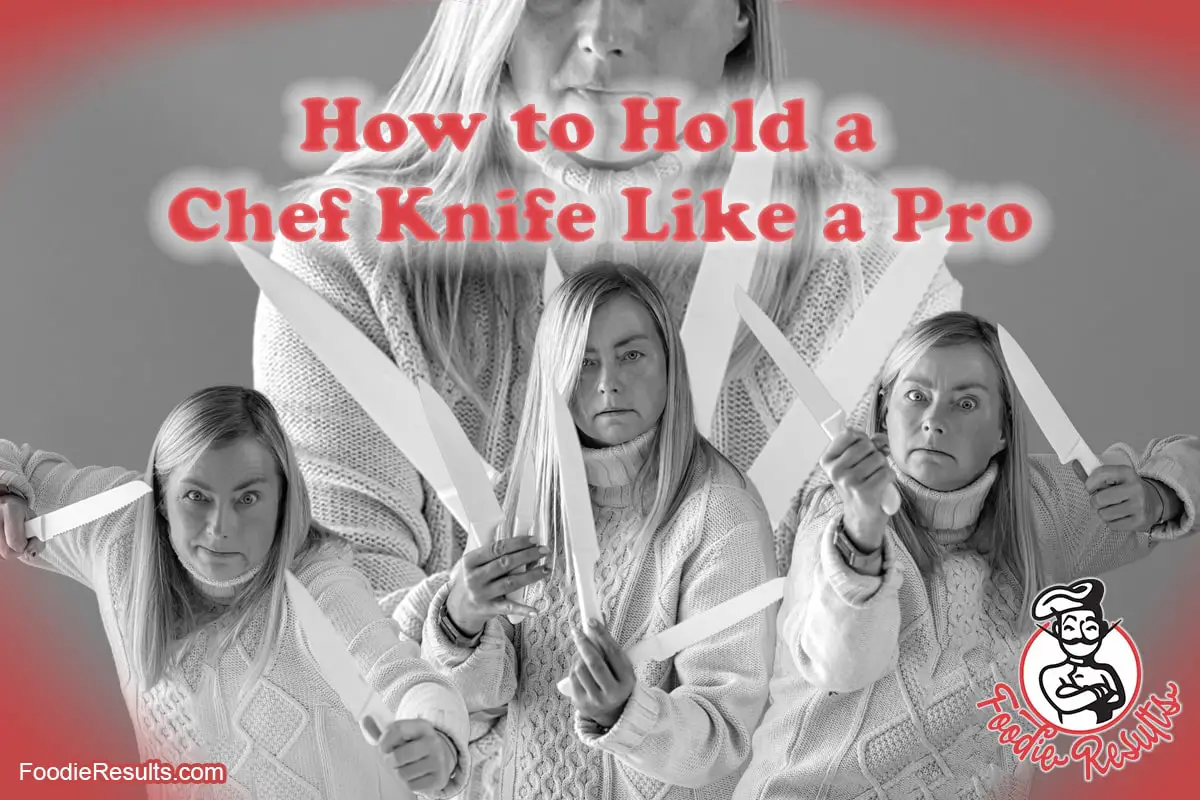After the first time I cooked, I realized I was not too fond of it, or that’s what I thought since my hands hurt afterward. It seemed tedious to me to cut, chop, and dice, straining my hands and making them sore, significantly when cutting solid vegetables like carrots and potatoes.
Read below to learn about:
Grips to Use
The Handle Grip
The Blade Grip
Motions to Learn
Claw Motion
Knife-Press
Safety Tips
Then, I realized that cooking could be for me when I learned how to hold a chef’s knife correctly. THIS KNOWLEDGE GAVE ME A NEW PERSPECTIVE ON KITCHEN ACTIVITIES once I realized how important it was to wield the blade perfectly. I began to look forward to food preparation instead of dreading it.
You can become its master if you hold it with skill. Taming the utensil becomes much easier once you know how to use it. I will share what I learned with you here.
Why Proper Knife Handling Matters
Incorrect knife handling can result in more than just hand strains. When you do not learn to use a knife, you may find yourself with a cut finger or worse. If that’s not enough, I don’t know what will get you interested in learning the basics of handling knives.
Also, handling a chef’s knife well will lead to better cooking results. Knife skills are essential to accomplishing uniformity in meat and vegetables, a critical aspect of cooking. With time, your skill level and performance speed will increase, resulting in more pleasant preparing foods to cook.
Grips to Use in Knife Handling
The Handle Grip
Grab the handle by the bottom of the handle, just behind the blade. If you want to gain a good deal of blade control, place a hand at the junction between the handle and the blade, which is the bolster. The handgrip technique will be more uncomplicated for newbies to learn.
The handle grip is used by many beginners when grasping a cutter. The novice can use this technique to comfortably hold the blade with their fingers tucked behind the bolster and their thumbs firmly placed on the blade for enhanced stability.
However, it has some disadvantages, even though it makes sense to a beginner and offers comfort.
Although it is the most common method used by nonprofessionals, cutting precision can be hindered by the handle grip, reducing comfort. A handle grip is usually not used by professionals due to inconsistent cutting. Because the balance of the handle is so far away from the blade, delicate projects become more complex.
This method can also be used for all kinds of knives, as it is more convenient.

The Blade Grip
The second method in this guide on how to handle a chef’s knife correctly involves performing more precise cuts, which is more challenging. Culinary arts programs teach students how to hold knives properly as their first lessons. According to most cooking instructors and expert chefs, the blade grip, or “pinch grip,” is the most effective way to hold a knife. To maintain the most control over your cutter and ensure precise cutting, you should practice holding your blade in the following manner.
A pinch grip is also known as the blade grip and is commonly used by chefs. The pinch grip has two fingers on the blade, unlike handle grips, which have all fingers tucked beneath the handle. Your thumb and index finger should be directly over the edge in the opposite direction of the bolster. Using two fingers to hold the knife will cut more delicate parts with more consistent stability. You have the blade between your thumbs and forefingers while tucking the rest of your fingers underneath the handle.
In addition to maximum control and balance over the knife, this grip indicates less effort when performing knife cuts, such as “rock chops”; anchoring the tip of the knife (usually a chef’s knife) against a cutting board and rocking the blade up and down through ingredients.
You’ll get closer to mincing, dicing, and slicing like a pro as you practice your blade grip and become familiar with knife cuts.
Becoming proficient in knives will provide you with greater control and stability as you chop, chunk, dice, and mince your ingredients. Nevertheless, this technique requires some time to perfect; but, It won’t take long for you to become a pro with constant practice.

Perfecting Knife Motions Builds Expertise
The Non-Dominant Hand’s Role
You don’t use the off-hand when holding the knife for everything you do, but it has an important job to do when pieces of food need to be held firmly while being cut.
Since its job is at risk and likely to get cut, it will be affected. Maintaining reasonable off-hand control involves letting it perform ‘horse’ positions. Make the primary hand resemble a horse’s leg and the head’s middle finger, slightly elevated but bending downwards.
Assume this position with your non-dominant hand while holding the pieces you are about to chop. It is best to put the horse’s neck or the middle finger on the knife’s side while your other fingers stabilize the materials.
Your appendages should be tucked to prevent them from getting damaged. Using your fingers to control your food is an efficient way to use proper knife usage.
The Claw Motion
Place your hand flat on the cutting board with your fingers slightly spread out. It would be best to curl your fingers inward, and your palm should be down. Consider the claw-like shape of your hands. Your fingertips will be protected from the knife’s cutting edge.
You should hold the ingredients in place while you dice or slice them with your tucked-in fingertips. You can then begin cutting when they are stable. Knives blades shouldn’t rest on anything other than curled fingers.
To complete the process, rock the knife from side to side. Keep your claw motion safe by avoiding lifting the claw too much.
The Knife-Pressing Motion
You may want to use the knife-pressing method if you’re mincing herbs, garlic, or ginger. The blade grip technique should be used when holding the knife. Then, rest the ring, middle, and index fingers of your non-dominant hand on the knife’s blade tip.
You will gain a more comfortable grip by shaking the blade back and forth. Be sure to mince the pieces as finely as possible by reviewing them several times.

Extra Tips for Safety
Keeping blade use safely is crucial, so here are a few more safety tips
Always Use Correct Knife Form
Stay safe by keeping your fingers tucked in and holding the blade firmly. Always maintain your attention on the task at hand.
Keep Your Cutting Board Still and Stable
If your cutting board is not held stable in place, your blade skills won’t prevent accidental cuts. Wooden boards with good maintenance should stay in business if they are not warped. Place either a kitchen towel or a dishcloth under your plastic cutting board if it slides.
Keep Your Chef’s Knife Sharp
Dull knives can cause more chances for injury than sharp ones. Don’t doubt that fact. Sharpening your chef’s knife keeps you safe, not to mention making your cuts better. Keep your blade in top shape using either a manual or electric blade sharpener.
Conclusion
Depending on how you approach cooking, it can be complicated or straightforward. Using the right tools in the kitchen and the correct techniques, such as a knife, will make maneuvering around a lot easier.
Before reading this, did you know that correctly controlling the knife can help with many hand problems generated when using one? It was certainly eye-opening to me! It enhanced my kitchen experiences so much that I just had to share it with all of you. Now you know that you will never again fear food preparation for cooking once you’ve mastered knife handling techniques.


